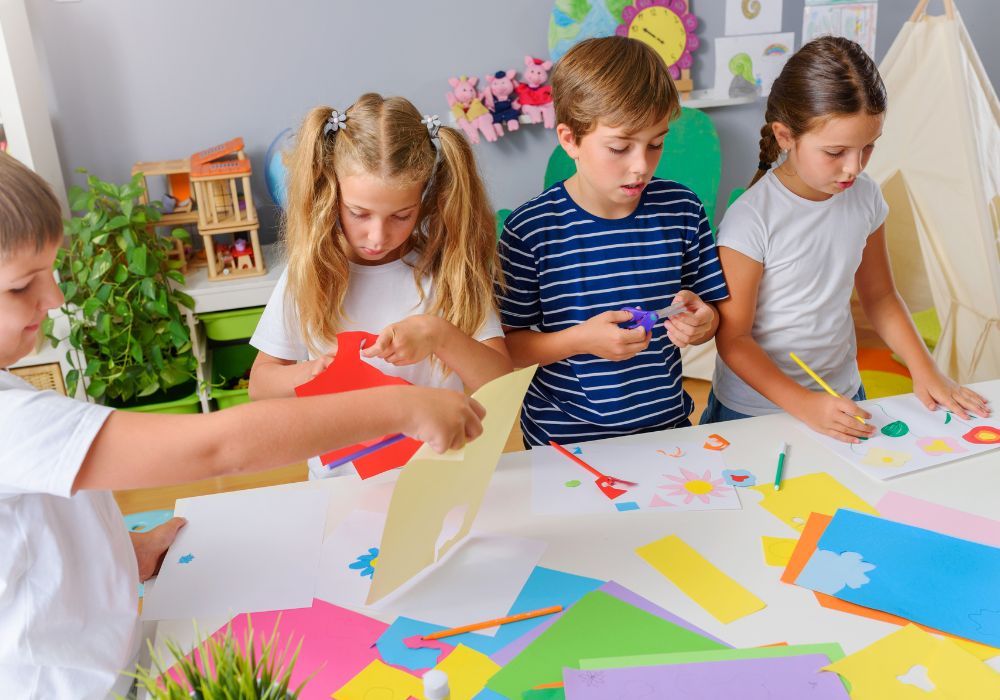Crafts are more than just a fun activity; they’re a pivotal part of childhood development. Engaging children in crafts not only unleashes their creativity but also enhances their fine motor skills, critical for tasks like writing and buttoning clothes. “Crafts for Kids: Engaging Projects to Develop Fine Motor Skills” will guide you through various craft projects designed to boost these essential skills in a playful and enjoyable way. Each project is tailored to be age-appropriate and stimulates skill development while ensuring plenty of smiles along the way.
Contents
Importance of Motor Skills For Children
Children’s whole development and success in daily activities depend on fine motor skills. These abilities are essential for writing, buttoning clothes, and using utensils since they call for the small muscles in the hands and fingers. Early development of these skills prepares one for more advanced skills including tool use and musical instrument performance in adulthood.
Children’s fine motor skills can be improved in an entertaining and instructive manner with crafts for kids. Children’s hand-eye coordination, dexterity, and control get better from cutting shapes, coloring inside lines, and assembling little pieces. Regular craft helps not only with their physical growth but also with their confidence, creativity, and problem-solving capacity.
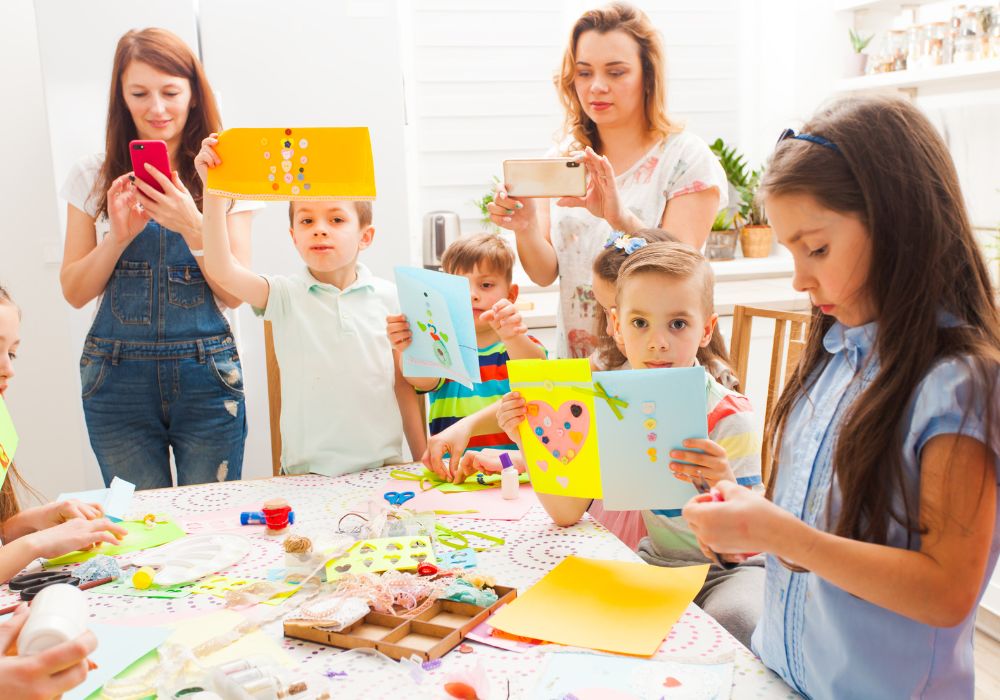
Crafts for Kids to Develop Their Motor Skills
Crafts for kids are more than just time fillers, they provide a foundation for developing crucial life skills. Among these, fine motor skills are vital as they involve coordination of small muscles in the hands and fingers. Crafting helps children hone these skills in a fun and interactive way, preparing them for more complex tasks like writing and tying shoes.
Simple Paper Crafts
Paper crafts are an excellent starting point for young crafters. They require basic materials like paper, glue, and scissors, and offer a variety of activities that improve precision, hand strength, and coordination.
Paper Tearing and Pasting
Begin with paper tearing and pasting, a simple activity that doesn’t even require scissors. Have kids tear colored paper into pieces and paste them onto a base paper to form a mosaic or a collage. This activity is great for developing grip strength and finger dexterity.
Creating Paper Chains
Making paper chains can help kids learn sequential hand movements. Provide them with strips of colorful paper and guide them to create loops that they can glue into interlocking circles. This not only teaches them about patterns and sequences but also enhances their ability to use adhesives and manipulate small objects.
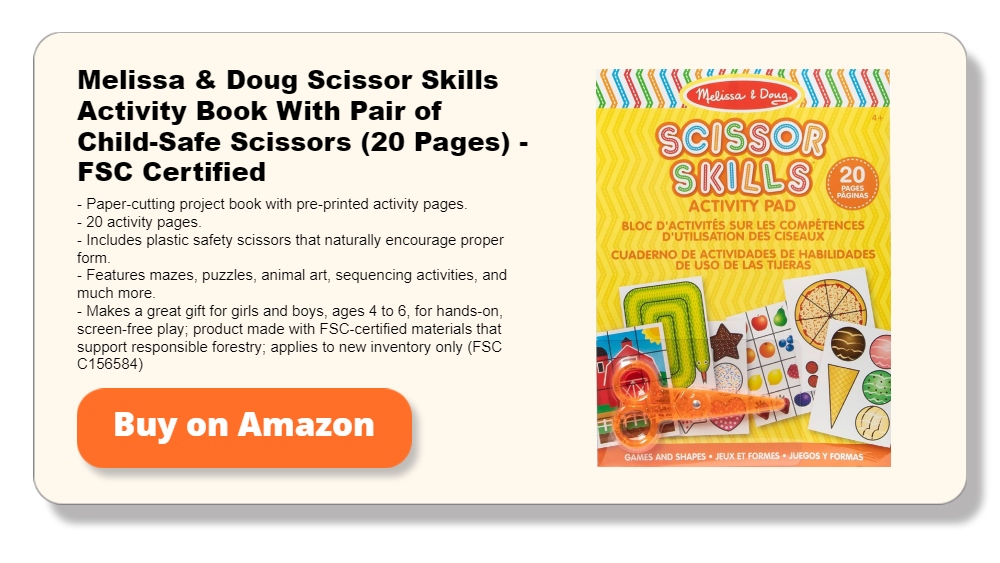
Crafting with Paper Collages
Encourage children to create paper collages, which involve gluing various shapes onto a larger paper. They can cut or tear shapes and arrange them creatively, which is excellent for spatial awareness and artistic expression. This activity also allows for the use of different textures and materials, making it a sensory-rich experience.
These paper crafts are not only enjoyable but are instrumental in building the fine motor skills children need for academic and everyday activities. Engaging in these crafts regularly can lead to significant improvements in hand-eye coordination and manual dexterity.
Fun with Clay
Clay crafting is a tactile and engaging activity that offers endless creative possibilities for children. Working with clay is one of the best crafts for kids, as it involves squeezing, rolling, and sculpting, which are excellent exercises for building hand strength and improving dexterity. Kids not only learn about art and design but also enhance their sensory skills and spatial awareness.
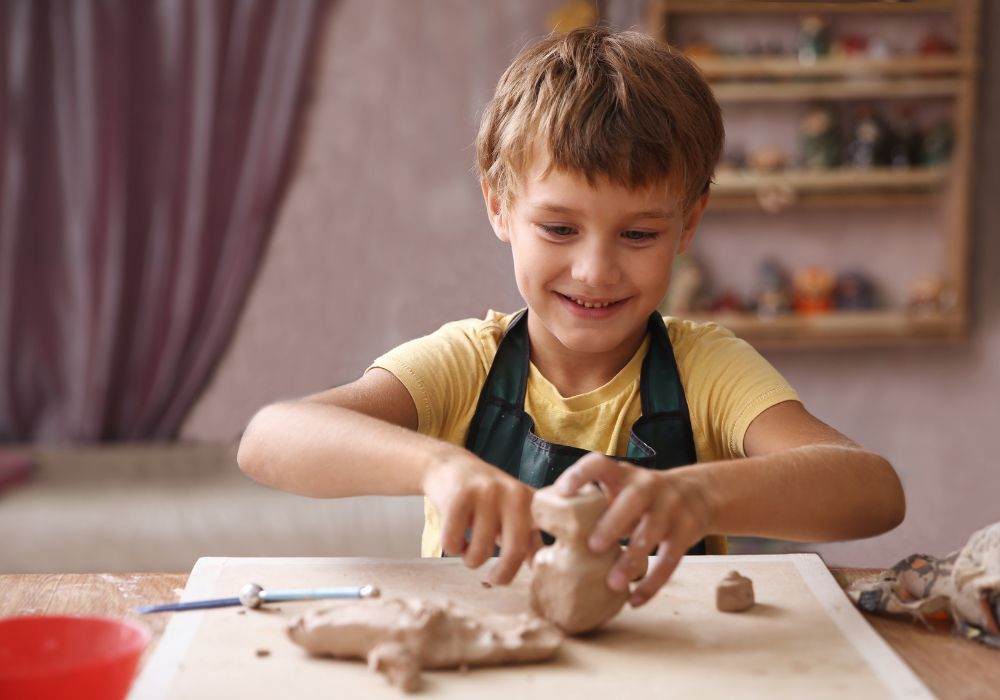
Pinching and Rolling Techniques
Start with basic pinching and rolling exercises. Encourage kids to make small balls by rolling the clay between their palms or on a flat surface. Then, teach them to use their thumb and fingers to pinch the clay into various shapes like discs or cones. These activities are fantastic for fine-tuning motor skills and teach kids the basics of manipulating materials to form objects.
Sculpting Clay Figures
Move on to sculpting figures, which can be as simple or complex as the child’s skills allow. Guide them in creating animals, flowers, or even their favorite cartoon characters. This part of clay crafts for kids helps in enhancing precision and attention to detail, as children learn to add features and textures to their creations.
Creating Clay Ornaments
Another fun project is making clay ornaments. Kids can use cookie cutters to shape the clay and then personalize their ornaments with paint, beads, or even imprints made with everyday objects. After drying, these ornaments can be used as gifts or decorations, providing a sense of accomplishment alongside the developmental benefits.
Clay crafts for kids not only foster creativity and imagination but are crucial in developing fine motor skills and cognitive abilities. Engaging regularly in these activities will help children gain control over their hand movements and boost their creative thinking.
Bead Crafts for Kids
Bead crafts are a colorful and exciting way for children to develop their fine motor skills and hand-eye coordination. Threading beads onto string or wire is a fantastic craft for kids that requires concentration and precision, making it an excellent activity for improving focus and dexterity.
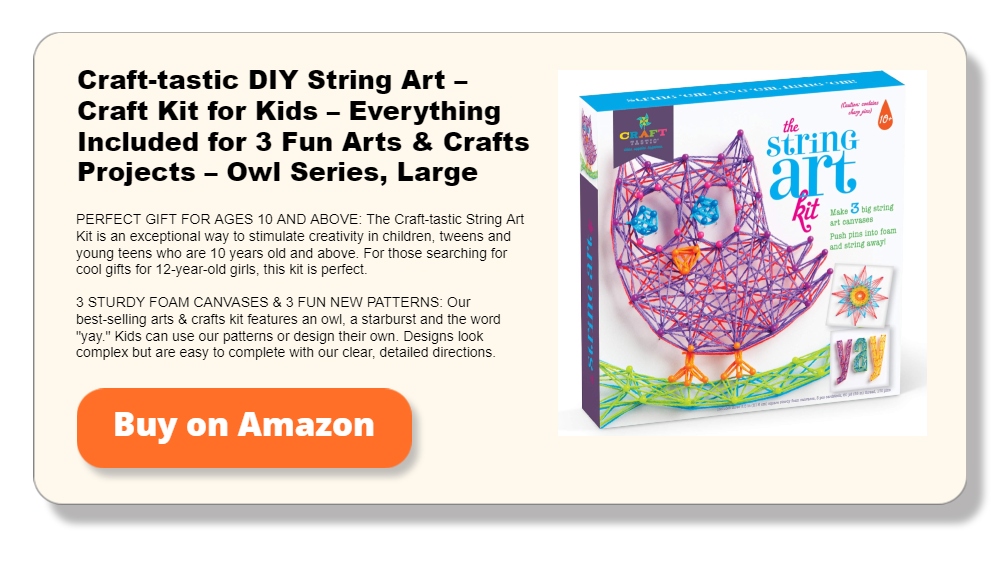
Threading Beads
Begin with simple threading activities. Provide children with large beads and a stiff lace or a shoestring, which makes it easier for little hands to handle. As they grow more skilled, they can graduate to smaller beads and thinner strings. This progression in bead crafts for kids challenges them incrementally, which is key in motor skill development.
Sorting Beads by Color and Size
Before threading, encourage kids to sort their beads by color and size. This not only prepares them for the threading activity but also enhances their ability to recognize and categorize objects, which is an important cognitive skill. Sorting is also a calming activity that can help kids develop patience and attention to detail.
Making Jewelry and Decorations
Once they are comfortable with threading, kids can start making simple jewelry items like bracelets and necklaces, or decorations such as sun catchers and coasters. These projects allow children to express their creativity and style, which boosts their self-esteem and keeps them engaged in the craft.
Bead crafts for kids are not just about making pretty things; they are crucial for developing precision, coordination, and planning skills. Regular practice with beads can significantly improve a child’s ability to manipulate small objects and their overall manual dexterity. This type of crafting is both enjoyable and educational, making it a valuable addition to any child’s developmental activities.
Textile Arts
Textile arts offer a unique avenue for creativity and skill development, making them an ideal craft for kids. Engaging in activities like sewing, weaving, and fabric collage allows children to explore various textures and materials while honing their fine motor skills and eye-hand coordination.
Simple Sewing Projects
Begin with straightforward sewing projects that involve large, blunt needles and thick thread or yarn. Kids can start by sewing shapes onto burlap or felt. This introductory sewing activity not only keeps them engaged but also improves their precision and dexterity. As they master these basic skills, they can move on to more intricate designs or even their own small stuffed animals or pillows.
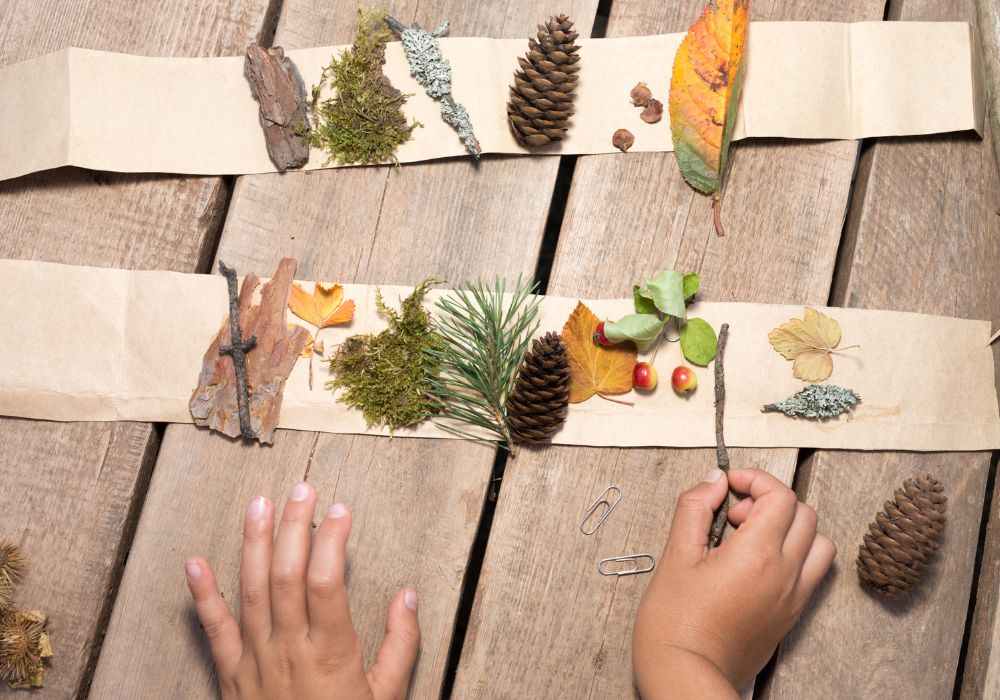
Weaving
Weaving is another engaging textile crafts for kids. Start with a simple homemade loom, perhaps just a sturdy cardboard with slits cut into it. Kids can weave with ribbons, large yarns, or strips of fabric, learning the over-and-under motion. This activity enhances their pattern recognition and sequencing skills, crucial for cognitive development.
Fabric Collages
Fabric collages are perfect for young children, as they can mix and match different fabrics to create a piece of art. Kids cut or tear fabric pieces and arrange them on a larger cloth, securing them with fabric glue or simple stitches. These crafts for kids is excellent for creativity and also serves to enhance their tactile and visual discernment.
Textile arts are not just fun; they are educational crafts for kids that foster an appreciation for materials and craftsmanship, while also enhancing their fine motor skills. These crafts encourage patience, precision, and a sense of achievement, contributing positively to their developmental milestones.
Crafting with Nature
Crafting with natural materials is a wonderful way for children to connect with the outdoors while developing their fine motor skills. Using items like leaves, twigs, and stones, nature crafts for kids promote environmental awareness and creativity in a hands-on learning environment.
Leaf and Bark Rubbings
Start simple with leaf and bark rubbings. Children can place leaves under paper and use crayons to rub over the top, capturing the intricate details of each leaf. Similarly, they can make bark rubbings from different trees. This activity not only is fun but also enhances their sensory skills and awareness of natural textures.
Building with Twigs and Stones
Building small structures with twigs and stones can be both a creative and educational crafts for kids. They can construct fairy houses, small animal pens, or abstract sculptures. This task encourages spatial reasoning, balance, and creativity, while also improving hand-eye coordination.
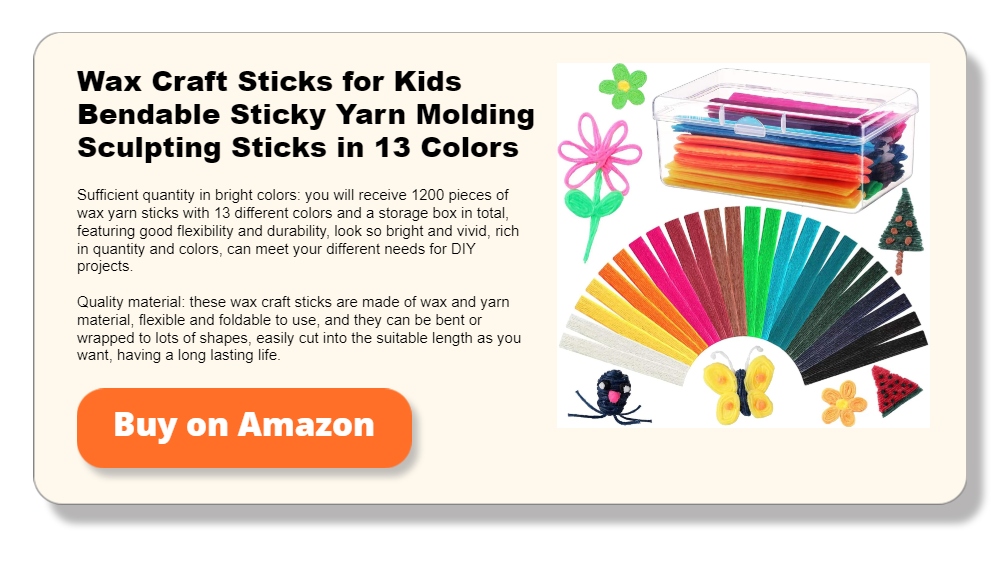
Nature-inspired Art Projects
Encourage kids to create art projects using a variety of natural materials. They might glue twigs, leaves, and stones onto cardboard to make a nature scene or use flowers for dyeing fabric. These crafts for kids not only enhance their understanding of nature’s colors and textures but also promote ecological thinking.
Crafting with nature not only engages children in a profound way but also teaches them about the environment and the importance of preserving it. These crafts for kids are not only about making beautiful items but are also about instilling a sense of stewardship for the natural world. Regular engagement in these activities can greatly enhance a child’s fine motor skills and environmental consciousness.
Recycled Crafts
Recycled crafts provide a creative and environmentally friendly way for children to explore their artistic side. Using items that would otherwise be discarded, recycled crafts for kids teach the importance of sustainability while enhancing their creativity and fine motor skills.
Creating with Cardboard Tubes
Start with simple projects using cardboard tubes from paper towels or toilet paper rolls. Kids can transform these into cars, animals, or telescopes. This kind of recycled craft for kids encourages them to think innovatively about everyday objects and how they can be reused, all while practicing their cutting and gluing skills.
Egg Carton Creations
Egg cartons are versatile materials for recycled crafts for kids. They can be cut into individual cups and painted to become tiny treasure holders or transformed into caterpillars and flowers. These projects help children practice painting within lines and joining parts together, fostering both their artistic abilities and manual dexterity.
Plastic Bottle Projects
Plastic bottles can also be used in recycled crafts for kids. They can be cut and painted to make bird feeders or beautiful planters. Handling scissors to cut through tougher materials and painting on a curved surface are excellent for developing hand strength and control.
Upcycling Clothes
Encourage kids to upcycle old clothes into bags, pillow covers, or even new garments. This type of recycled craft for kids is not only practical but also helps them learn basic sewing skills, enhancing their ability to handle fabric and thread.
Recycled crafts for kids are an excellent way to combine creativity with eco-consciousness. These activities not only promote environmental awareness but also develop fine motor skills, making them a valuable addition to any child’s craft activities.
Interactive Craft Games
Interactive craft games merge the fun of making things with the joy of play, making them a dynamic part of children’s craft activities. These crafts for kids not only foster creativity but also enhance cognitive abilities and social skills through interactive play.
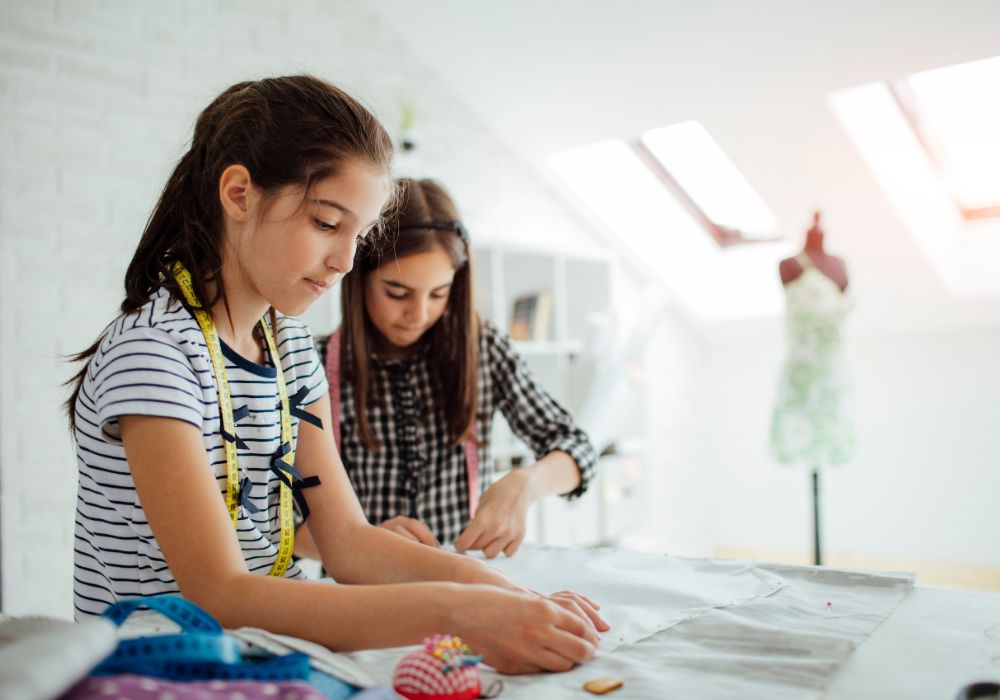
Crafts That Function as Games
One popular interactive craft for kids is creating board games from scratch. Kids can design their game boards and pieces using cardboard, markers, and other craft supplies. This allows them to use their imagination extensively and improves strategic thinking as they come up with game rules and objectives.
Homemade Puzzles
Crafting puzzles is another engaging activity. Kids can paint a picture on a sturdy piece of cardboard and then cut it into pieces. This type of craft for kids encourages problem-solving skills and offers a great way for them to think critically as they decide how to segment the puzzle effectively.
Matching Games
Creating matching games is a simple yet educational craft for kids. They can draw and cut out shapes, characters, or even letters, and make pairs that need to be matched. This activity is excellent for memory development and learning basic sorting and pairing concepts.
DIY Musical Instruments
Children can also make simple musical instruments such as drums from oatmeal boxes or shakers from plastic bottles filled with beans. These crafts for kids are not only fun to make but also to play with, providing a foundation for understanding rhythm and music.
Interactive craft games are an essential part of crafting activities for kids, offering both fun and educational benefits. By engaging in these crafts for kids, they not only develop their fine motor skills and cognitive abilities but also learn valuable social skills through interactive play. These crafts for kids make learning exciting and deeply engaging.
Crafts with Buttons and Zippers
Crafting with buttons and zippers introduces children to the fascinating world of everyday objects turned into art and utility items. This type of craft not only sparks creativity but also enhances fine motor skills, as kids learn to handle small components with precision. Activities involving buttons and zippers are particularly effective for developing the dexterity and coordination needed for tasks such as tying shoes and writing.
Button Mosaics and Art
One of the most visually appealing crafts for kids is making button mosaics. Children can glue buttons of different sizes, shapes, and colors onto a cardboard or wooden base to form pictures or patterns. This activity requires picking up small buttons, arranging them in a designated area, and carefully gluing them down, all of which are excellent for developing fine motor skills and hand-eye coordination.
Another creative use for buttons in crafts for kids is decorating picture frames. Kids can take a plain frame and transform it into a vibrant piece of art by adhering colorful buttons all around it. This not only makes for a great gift or room decoration but also allows children to practice precise placement and control.
Crafts with Zippers
Zippers can be used to create unique and interesting crafts, such as zipper flowers. By manipulating the zipper cloth into a circular or spiral pattern and securing it, kids can make brooches, hair clips, or embellishments for bags. This activity enhances their ability to follow complex instructions and use their fingers in more detailed and controlled ways.
Encourage children to create zipper art by forming shapes, letters, or even entire pictures with old zippers. They can lay the zippers out on a heavy sheet of paper or fabric, arranging them to create various designs. This type of crafting helps improve cognitive skills like planning and problem-solving while also boosting motor skills as children manipulate the flexible, segmented zippers.
Integrating Buttons and Zippers into Fabric Crafts
A more advanced craft for kids involves sewing buttons onto fabric or attaching zippers to make pouches or simple clothing items. This task is ideal for older children who have some experience with threading needles and can safely handle sewing tools.
Sewing not only improves their fine motor skills but also teaches them valuable life skills such as repairing clothes and understanding garment construction.
Crafts with buttons and zippers are not just fun; they are educational tools that enhance fine motor skills, encourage creativity, and teach kids about the practical applications of everyday objects. These activities provide a foundation for more complex
Conclusion
Crafts for kids play a crucial role in developing fine motor skills, enhancing dexterity and hand-eye coordination through enjoyable and creative activities. As children manipulate small items and engage in detailed crafting, they improve their precision and control, essential for academic and everyday tasks. These crafts not only boost motor development but also foster creativity and confidence in young learners.

